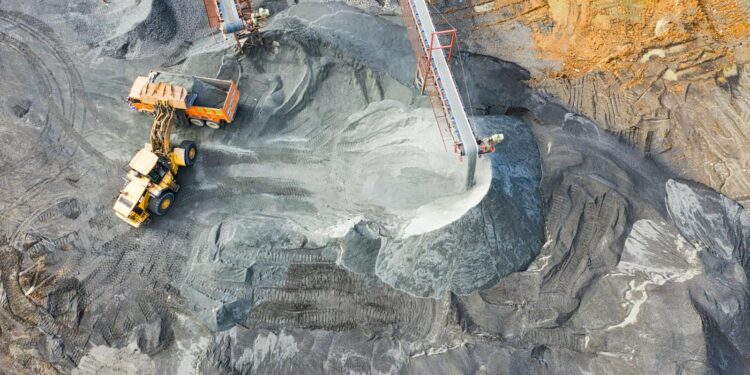Introduction to Energy Independence-
Imagine a world where your manufacturing or mining operation no longer relies on the grid for its power. This vision of energy independence is not just a dream; it’s an achievable reality for many businesses. Becoming a small power producer means taking control of your energy needs by generating, managing, and consuming your own power on-site. By doing so, you can reduce your dependence on utility providers, lower energy costs, and create a more resilient system that can weather fluctuations in the power grid.
This journey towards energy self-sufficiency begins with a deep dive into understanding your current energy usage and then mapping out the most suitable renewable technologies for your site. By considering financial incentives, available technologies, and the right energy storage options, you can develop a plan that ensures long-term sustainability and cost savings.
The Path to Becoming a Small Power Producer
The First Step: Energy Analysis
The first step in your journey toward energy independence is conducting a thorough energy analysis. This analysis is essential because it provides you with a clear understanding of your operation’s energy needs, usage patterns, and inefficiencies. Without this foundational knowledge, it would be difficult to determine where changes can be made to cut energy consumption or implement renewable technologies effectively.
You’ll start by hiring an energy auditor—a professional with the expertise to evaluate how energy is consumed throughout your entire operation. Look for someone who has experience working with industrial or commercial facilities, as they will be familiar with the unique energy demands of manufacturing or mining operations.
Once the energy audit begins, the auditor will help you gather your utility bills over the past year. These bills are invaluable because they offer insight into how much energy you’re consuming and when. By analyzing this data, you’ll discover peak energy consumption periods, which is crucial for planning when to generate energy on-site.
Next, your energy auditor will break down the usage by category—lighting, HVAC systems, machinery, heating, cooling, and other equipment. This breakdown will highlight the areas where your operation consumes the most energy, pinpointing the biggest opportunities for improvement. Understanding where your energy is going allows you to focus on the areas where you can achieve the most savings.
During this audit, you’ll also need to identify peak demand periods—times when your operation consumes the most energy. These periods, often occurring during peak production hours or seasonal surges, are key to determining how much energy you need to generate and store to maintain business continuity.
Distinguishing Between Critical and Non-Critical Energy Loads
As you move forward, the next crucial step is to assess which parts of your operation are absolutely dependent on a constant power supply and which can be temporarily adjusted or shut down during power shortages or off-peak hours. Critical loads are the systems that cannot afford downtime, such as key machinery, safety systems, or IT infrastructure. These must be powered reliably at all times. On the other hand, non-critical loads are operations that can be adjusted, rescheduled, or even paused when there’s an energy shortage.
This step helps you prioritize where to focus your energy generation efforts. It’s a strategic move that allows you to ensure that the most essential parts of your operation stay powered, while optimizing energy use across the rest of your systems.
Understanding Energy Demand Profiles
With the energy audit complete, it’s time to create a more comprehensive understanding of your energy demands. This involves tracking your hourly and seasonal energy use. Some processes may require more energy during certain times of the day or year. For instance, your operation might consume more energy during the summer months or when production ramps up for a large order. Mapping this out in a demand profile will help you identify patterns and make more informed decisions about what kind of energy generation technologies will work best for your needs.
This profile also helps to identify energy peaks—times when your energy demand is at its highest. By understanding when these peaks occur, you can explore ways to reduce them, such as shifting energy-intensive tasks to off-peak hours or installing systems that help balance energy load more effectively.
Evaluating Renewable Energy Options for Your Site
Once you have a clear understanding of your energy demands, the next step is to assess your site’s potential for renewable energy generation. This is where you start to explore solar, wind, or even geothermal energy, depending on your location and the specific needs of your operation.
For example, if you’re operating in a sunny region, solar panels might be an excellent choice. With solar feasibility, you’ll want to assess the number of sunlight hours your site receives each day and the available space for installing solar panels. If your facility has ample roof space or unused land, you might be able to generate significant amounts of power through solar energy.
On the other hand, if your site is located in an area with consistent wind speeds (typically 10-15 mph or more), wind turbines could also be a viable option. A wind feasibility study can help determine whether installing turbines is worth considering.
Another renewable option to explore is geothermal energy, especially for operations that require significant heating or cooling. Geothermal systems use the Earth’s natural heat to provide energy and can be especially efficient for mining or manufacturing sites with large-scale heating needs.
The Role of Energy Storage
Renewable energy generation, such as solar and wind, is often intermittent, meaning that energy is produced only when the sun is shining or the wind is blowing. To ensure your operation has a consistent power supply, you’ll need to incorporate energy storage systems. These systems will store excess energy generated during peak production times so that it can be used during periods when generation is low.
Battery storage is one of the most common solutions. Lithium-ion batteries, for example, can store energy for use during non-sunny or non-windy periods. You’ll need to calculate the appropriate size of the battery system based on your energy needs and the fluctuations in generation capacity. In addition, Energy Management Systems (EMS) can help optimize how and when you draw power from the grid, your energy generation system, or storage, ensuring the most efficient use of available resources.
Choosing the Right Energy Generation Technologies
After gathering all the necessary data from your energy audit and site assessment, it’s time to explore the renewable energy technologies that best suit your needs.
Solar power, for instance, is one of the most popular options. It’s a well-established technology with decreasing installation costs, making it a cost-effective choice for many manufacturing and mining operations. With the Investment Tax Credit (ITC) available, federal incentives can reduce the initial investment required for solar installations.
If wind conditions are favorable at your site, wind power might be an ideal complement to solar, as wind turbines can generate power when the sun is not shining.
For operations that require both electrical and thermal energy, a Combined Heat and Power (CHP) system might be the most efficient solution. CHP systems produce electricity while capturing the excess heat for use in your facility, resulting in high energy efficiency.
Lastly, fuel cells offer a reliable source of electricity with low emissions, making them a great option for operations with consistent, stable energy needs.
Financial Considerations: Cost Savings and Financing Options
The cost of transitioning to energy independence is significant, but there are many financial incentives and financing options available to ease the burden.
Start by estimating the capital costs of installing the necessary energy systems—solar panels, wind turbines, batteries, etc. You’ll also need to consider operational costs, such as maintenance and repair, as well as the cost of energy storage systems.
Fortunately, there are numerous financial incentives at both the federal and state levels that can significantly reduce these upfront costs. For example, the federal Investment Tax Credit (ITC) provides a 26% tax credit for solar energy installations. Many states also offer rebates, subsidies, and tax incentives to support renewable energy projects.
In addition to incentives, financing options such as loans, Power Purchase Agreements (PPAs), and equipment leasingcan make the initial capital investment more manageable. A PPA allows a third party to install and maintain the system while you buy the energy produced at a fixed rate, helping you avoid upfront costs.
The Road Ahead
Becoming a small power producer is a journey that requires careful planning and execution. By conducting a thorough energy audit, evaluating renewable energy technologies, and leveraging financial incentives, you can reduce your reliance on the grid and take control of your energy future.
The next step is to engage with energy consultants and financial professionals to assess your specific needs and develop a tailored implementation plan. With the right strategy and technologies in place, your manufacturing or mining operation can become more sustainable, cost-effective, and resilient to grid instability.
Let Positive Phil Point You in The Right Direction- phil@positivephil.com


















